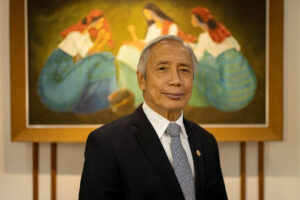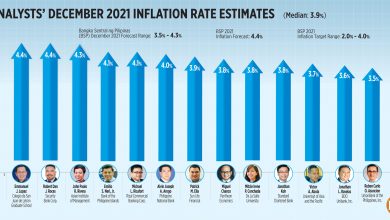Twin deficits, negative real rate to put pressure on peso

THE PHILIPPINES’ twin deficits, along with its negative real interest rate, will continue to put pressure on the peso, Manulife Investment Management said.
“The main macro issues facing the Philippines right now is the rapidly widening twin deficits, and from a currency perspective, the peso is still relatively overvalued,” Sue Trinh, Manulife Investment Management head of Macro Strategy, Asia, said in a briefing on Tuesday.
“The trade deficit there, for instance, reached its widest record levels… So, really these twin deficit issues on current account and fiscal are going to be lingering around, and it’s likely to be a real drag on the economy, as well as the exchange rate,” Ms. Trinh said.
She added that the Bangko Sentral ng Pilipinas (BSP) also seems “less inclined” to enter the foreign exchange market to support the peso, “especially as the BSP had to turn more hawkish given the inflation pressures, which is clearly counter-cyclical given the growth trends.”
Marco Giubin, Senior Portfolio Manager for Equities at Manulife Investment Management, said with inflation rising, the country’s real interest rate is negative, which has added to currency pressures.
“I guess from a monetary standpoint, they might be a little bit behind the curve … The inflation print in the Philippines is higher so it’s definitely on a negative rate path,” Mr. Giubin said.
“Philippine peso, we think, will remain under pressure given the continuing US dollar strength coupled with a widening trade deficit … The twin deficit situation, not to mention the recent change in government, there’s been a whole range of issues as to why the currency has performed the way it’s performed relative to other ASEAN (Association of Southeast Asian Nations) currencies,” he added. “It’ll be very interesting to see in the next couple of weeks, we’ll get a bit more clarity as to what the new administration is looking to do on the fiscal side, not to mention what we can expect from the monetary side.”
The peso closed at P56.37 versus the dollar on Tuesday, down by 39.1 centavos from Monday’s P55.979 finish, data from the Bankers Association of the Philippines’ website showed.
This is a new near 18-year low for the local unit as it was its worst close since Nov. 5, 2004’s P56.38 a dollar.
The peso’s intraday low of P56.45 versus the greenback on Tuesday also matched the record low set on Oct. 14. 2004.
The current account deficit was at $4.8 billion in the first quarter, higher than the $32-billion gap seen the year prior, amid a wider trade in goods deficit and the slight decline in net services receipts, latest BSP data showed.
Meanwhile, the government’s budget deficit was at P458.7 billion in the January to May period, down 18.99% from the year prior, as revenue growth outpaced spending.
BSP Governor Felipe M. Medalla last week said the central bank is prepared to raise benchmark rates by 50 basis points (bp) at their Aug. 18 meeting to keep inflation in check after the peso on Thursday breached the P56 level against the dollar.
The Monetary Board has raised benchmark interest rates by a total of 50 bps so far this year via back-to-back 25-bp hikes at their May 19 and June 23 meetings, bringing the overnight reverse repurchase facility or policy rate to 2.5%.
A 50-bp hike at the August meeting will bring the BSP’s key rate to 3%. Mr. Medalla also said last week that the central bank may need to raise borrowing costs by at least 100 bps more this year to bring the policy rate higher than the midpoint of its 2-4% inflation target. — D.G.C. Robles




